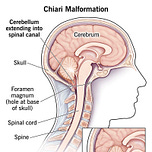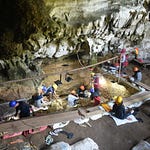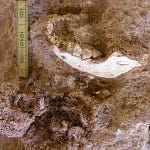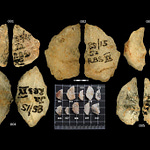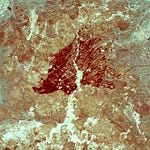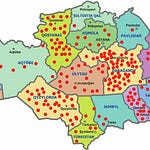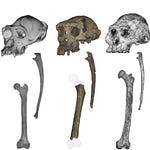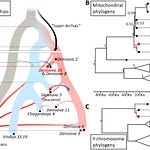By the time a patient with Chiari malformation type I reaches a neurosurgical clinic, the symptoms are often as frustrating as they are nebulous—migraines that throb when coughing, dizzy spells, tingling limbs. In some cases, the diagnosis requires an MRI to reveal what’s happening deep inside the skull: part of the cerebellum is slipping down into the spinal canal.
Now, a team of researchers has taken a new angle on this condition, suggesting that the anatomical roots of Chiari I malformation may lie not only in individual development, but also in our evolutionary history. A recent study in Evolution, Medicine, and Public Health1 proposes that one ancient hominin—Homo neanderthalensis—might be partly responsible for a mismatch between brain and skull geometry that still lingers in some humans today.
Flattened Occiput, Crowded Brain
Chiari I malformation is defined by a cerebellar tonsil herniation through the foramen magnum, the hole at the skull base where the brain transitions into the spinal cord. Typically, it arises when the posterior cranial fossa—the area of the skull that houses the cerebellum—is too small. For reasons that remain unclear, the occipital bone is shortened, and the cerebellum gets cramped.
Neurologists have long debated what causes the undersized occipital region. Past theories invoked craniosynostosis, vitamin A excess during pregnancy, and even fetal hydrocephalus. But no single explanation has proven sufficient. As one paper notes,
“The relationship between CM-I and each potential factor is inconsistent, which implies there may be another reason why some people develop this condition”
In 2013, neurosurgeon Yvens Barbosa Fernandes proposed a bolder explanation: perhaps some modern humans inherited cranial development genes from archaic humans like Homo erectus, Homo heidelbergensis, or Neanderthals. These ancestors had less globular skulls and flatter occiputs—features that compress brain volume toward the back of the head.
Digital Skulls and Evolutionary Shadows
To test the “Archaic Homo Introgression Hypothesis,” researchers used 3D geometric morphometrics to compare the cranial shapes of 103 modern humans, 46 of whom had Chiari I malformation. CT scan data revealed subtle but significant differences.
Patients with Chiari had:
Lower cranial vaults
Flatter occipital bones
Smaller and more forward-positioned foramen magnums
These traits echoed the classic Neanderthal cranium, particularly in how the squamous part of the occipital bone was shortened along the sagittal plane. When skulls of affected individuals were compared to fossils of Homo erectus, H. heidelbergensis, H. sapiens, and H. neanderthalensis, one connection stood out.
“The crania of living humans with CM-I are more similar to those of H. neanderthalensis than are the crania of living humans without CM-I,” the authors wrote.
The result was not uniform. Individuals without Chiari were closer in shape to H. erectus and H. heidelbergensis than those with the condition, a finding that weakens the original hypothesis. But the consistent link to Neanderthals stood firm.
A Hypothesis Refined: Neanderthal Genes and Cranial Mismatch
The researchers now propose narrowing the hypothesis. Rather than all archaic humans contributing to the mismatch, the evidence points most strongly to H. neanderthalensis. Their revised model, the “Neanderthal Introgression Hypothesis,” focuses on genes passed from Neanderthals into H. sapiens during their interbreeding episodes roughly 50,000 years ago.
Neanderthal skulls featured a sloping rear base and flattened occiputs, adaptations that supported heavy facial musculature and sinus cavities but left little room for an expanding cerebellum. In most modern humans, those traits were lost. But in a subset, it seems that cranial geometry from Neanderthal ancestors persisted, and under the strain of a fully modern brain, it can sometimes go awry.
“This is another way that Neanderthal genes might be influencing our health, and in this case, in a negative way,” said lead author Kimberly Plomp.
Evolution’s Hidden Costs
Most people today carry about 1 to 2 percent Neanderthal DNA. Although some of these genes help with immune function or fat metabolism, others come with trade-offs. Previous research has linked archaic gene variants to higher risks of nicotine addiction and complications from COVID-19. Now, it seems that our skull shape may carry similar relics.
The study authors caution that Chiari likely has multiple causes. Not every case can be pinned on Neanderthal DNA, and not all affected individuals carry those ancient variants. Still, this evolutionary angle adds nuance to clinical studies, offering a new lens for diagnosis and possibly early detection.
If confirmed, the link between Neanderthal ancestry and CM-I could guide public health efforts. African populations, with far less Neanderthal DNA, may have lower prevalence of the condition—though limited imaging studies make this difficult to verify.
What’s Next? Expanding the Fossil and Genetic Sample
The study’s fossil dataset was limited: just one skull from H. heidelbergensis and two from H. erectus were included. Broader comparisons with a larger fossil sample could strengthen or challenge the results. In parallel, the team is now working with population geneticists to scan the genomes of people with CM-I, looking for Neanderthal-linked sequences involved in cranial development.
There is also interest in studying the developmental trajectory of the condition. At what age do the skull traits emerge? Are asymptomatic children already carrying the mismatch? And might better knowledge of braincase geometry help identify patients before symptoms begin?
For now, the study adds a new page to the story of human evolution—one that reminds us that not every legacy of our deep past is neutral. Some ancient bones still press against us in unexpected ways.
Related Research:
Gunz, P., Tilot, A. K., Wittfeld, K., et al. (2019). Neandertal introgression sheds light on modern human endocranial globularity. Current Biology, 29(1), 120–127. https://doi.org/10.1016/j.cub.2018.10.065
Connects Neanderthal genes to changes in human skull shape, especially reduced globularity.
Gregory, M. D., Kippenhan, J. S., Eisenberg, D. P., et al. (2018). Neanderthal-derived genetic variation shapes modern human cranium and brain. Scientific Reports, 8, 6308. https://doi.org/10.1038/s41598-018-24671-8
Associates Neanderthal genetic variants with specific cranial and brain structures.
Kochiyama, T., Ogihara, N., Tanabe, H. C., et al. (2018). Reconstructing the Neanderthal brain using computational anatomy. Scientific Reports, 8, 6296. https://doi.org/10.1038/s41598-018-24626-z
Builds 3D models of Neanderthal brains, revealing differences in cerebellar structure.
Teixeira, J. C., & Cooper, A. (2019). Using hominin introgression to trace modern human dispersals. PNAS, 116(31), 15327–15332. https://doi.org/10.1073/pnas.1904824116
Broad look at introgression and its influence on human migration and biology.
Plomp, K., Lewis, D., Buck, L., Bukhari, S., Rae, T., Gnanalingham, K., & Collard, M. (2025). A test of the Archaic Homo Introgression Hypothesis for the Chiari malformation type I. Evolution, Medicine, and Public Health. https://doi.org/10.1093/emph/eoaf009

